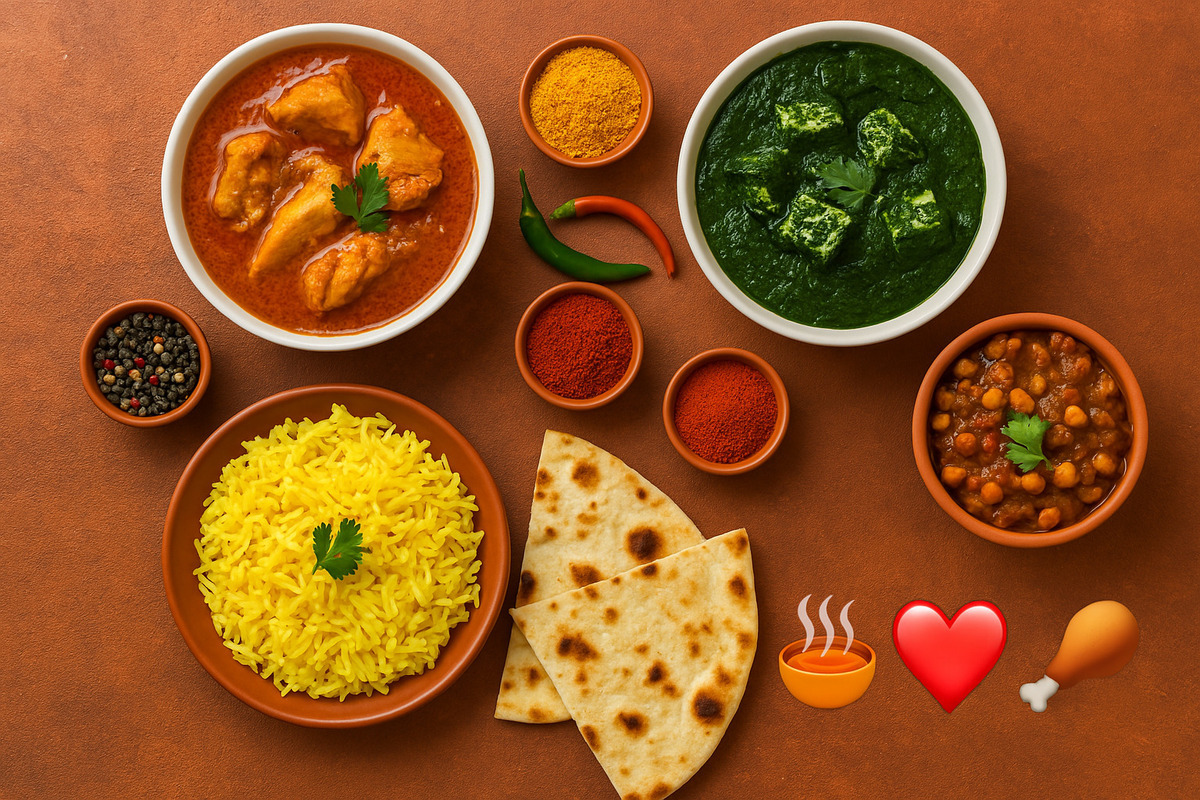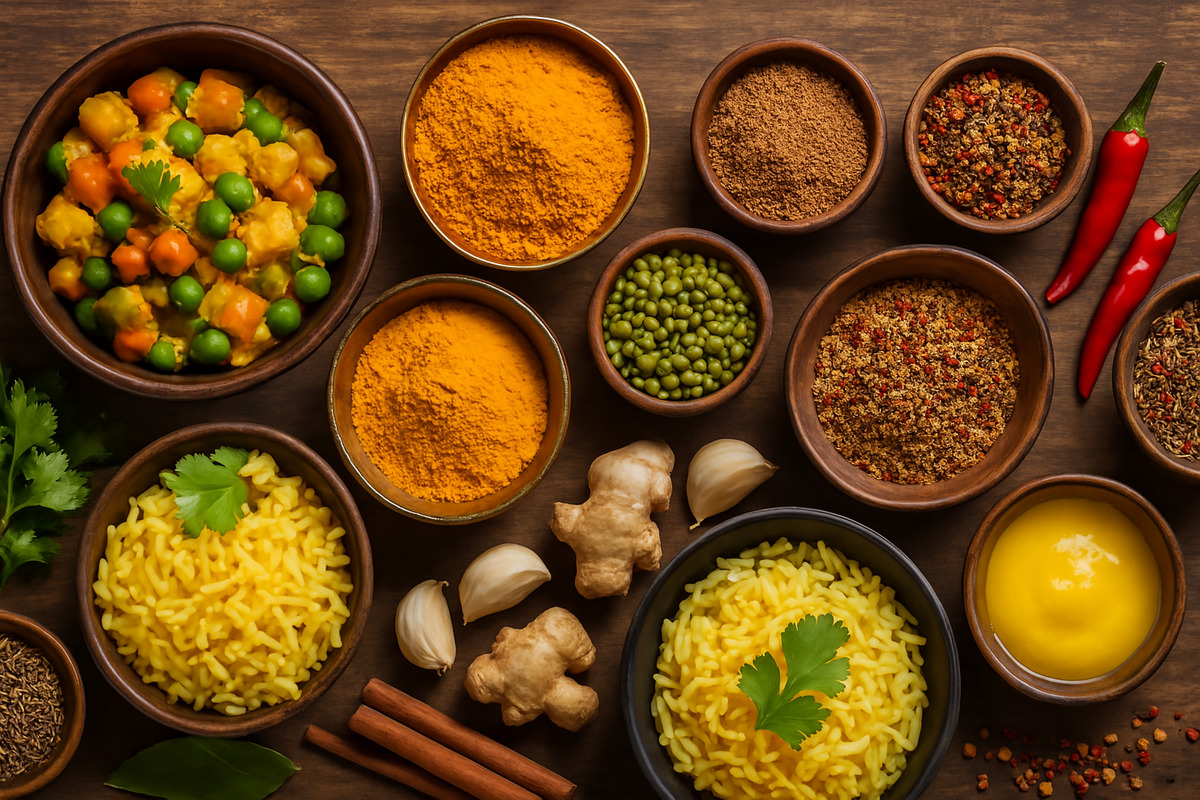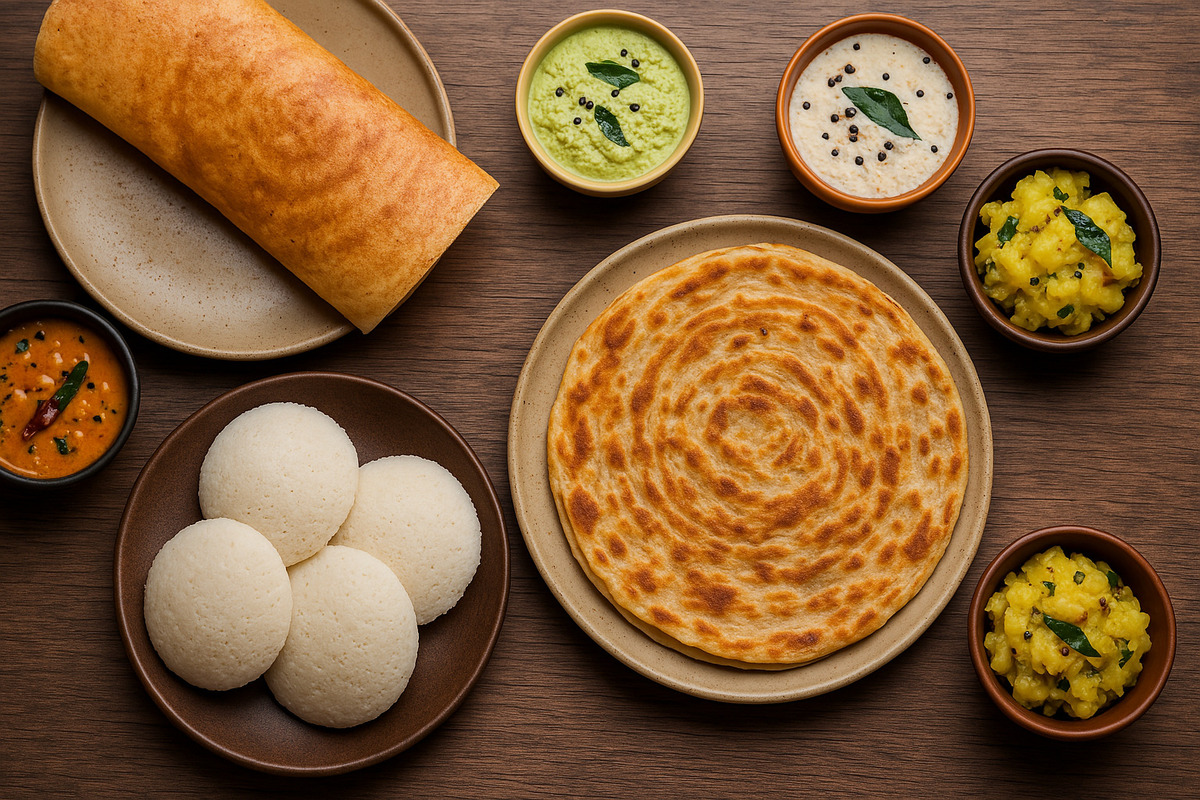
Yes—and no. The answer depends on the ingredients used, the cooking method, portion size, and frequency of consumption. Indian cuisine is complex, diverse, and shaped by centuries of regional practices. It can be deeply nourishing or excessively rich—sometimes within the same dish.
Core Ingredients That Support Health
Indian food is built around whole, plant-based ingredients and spices that carry significant nutritional value.
1. Legumes and Pulses
- Chana (chickpeas), rajma (kidney beans), and masoor dal (red lentils) are protein-rich.
- High in fiber and slow-digesting carbs, they help regulate blood sugar.
- They’re often paired with rice or roti, creating a complete protein source.
2. Spices with Benefits
- Turmeric: Anti-inflammatory and antioxidant properties.
- Cumin: Aids digestion and improves iron absorption.
- Ginger: Eases nausea and supports immune function.
- Coriander and Cardamom: Help in detoxification and controlling cholesterol.
3. Vegetables
- Dishes like saag, bhindi masala, and aloo-gobi rely on seasonal produce.
- Many recipes use minimal oil and emphasize steaming, stir-frying, or slow cooking.
- Fiber, vitamins, and minerals remain largely intact.
4. Fermented Foods
- Idli, dosa, and curd provide probiotics that support gut health.
- These items improve digestion and nutrient absorption.
Cooking Methods: A Double-Edged Sword
How Indian food is prepared determines whether it nourishes or burdens the body.
Healthier Techniques:
- Boiling and steaming: Used in dishes like khichdi or steamed dhokla.
- Dry roasting and grilling: Tandoori items use minimal oil and retain protein integrity.
- Stir-frying with minimal ghee or oil: Seen in home-style sabzis.
Less Healthy Approaches:
- Deep-frying snacks such as samosas, pakoras, or puris.
- Excessive use of cream, butter, or paneer in restaurant-style curries.
- Reusing cooking oil for frying.
Portion Control and Balance Matter
Indian food is often eaten family-style, which encourages shared meals but can lead to overeating.
Watch Out For:
- Overloading plates with multiple carb-rich items (rice, naan, puri).
- Skipping vegetables or salads.
- Using excessive amounts of pickles and chutneys, which can be high in salt.
Better Practices:
- Half the plate should be vegetables.
- Stick to one type of grain per meal.
- Limit fried items to occasional indulgences.
Street Food vs. Homemade
Indian street food is flavorful, quick, and addictive—but not always nutritious.
Street Food Pitfalls:
- Often deep-fried in reused oil.
- Hygiene issues can lead to digestive trouble.
- Loaded with refined flour and sugar.
Homemade Versions:
- Can be air-fried or baked.
- Spices and salt levels can be controlled.
- Fresh ingredients lower the risk of contamination.
Ayurvedic Influence on Balance
Traditional Indian cooking often follows Ayurvedic principles, balancing the six tastes: sweet, sour, salty, bitter, pungent, and astringent. This helps create meals that satisfy and support various body types.
Example Meal Structure:
- Grain: Rice or roti
- Protein: Lentils or legumes
- Vegetable: Seasonal mixed sabzi
- Fermented dairy: Curd or buttermilk
- Digestive aids: Pickles or chutneys
- Sweet: A small portion of jaggery-based dessert or fruit
So, Is It Healthy?
Indian food can be incredibly healthy when based on whole ingredients, mindful preparation, and cultural practices that favor balance. The real issue isn’t the cuisine—it’s how it’s adapted, portioned, and consumed in daily life. Homemade, minimally processed dishes rich in vegetables, legumes, and spices deliver powerful health benefits. Excessively oily, sugar-laden, or deep-fried options should remain occasional treats.
Balance your plate, honor the variety, and enjoy what Indian food does best: nourish the body and soul through flavor and tradition.


